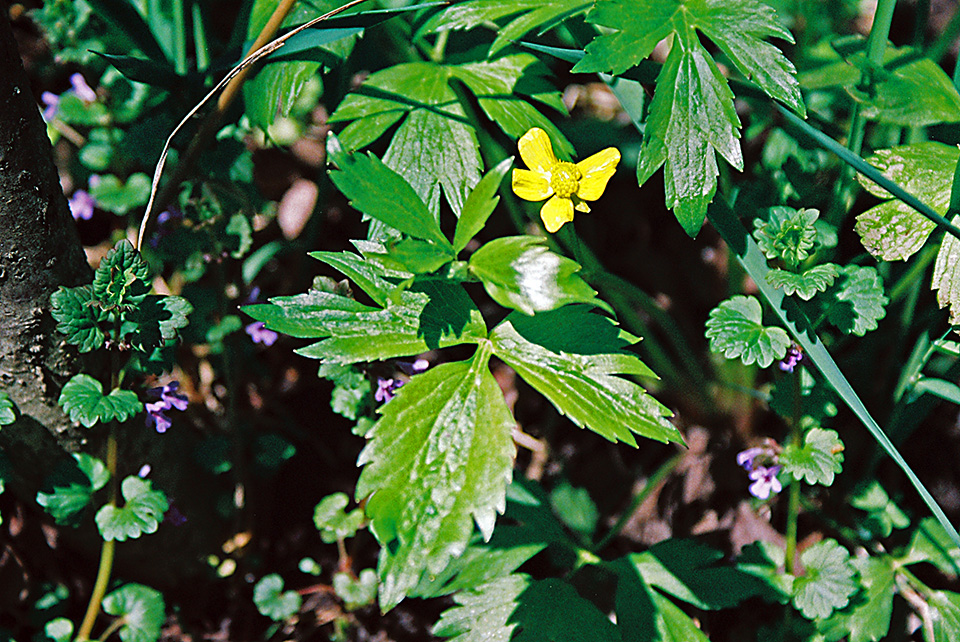

Changing the growing conditions in an area is one way to minimize the growth of the plant. There are no known biological controls at this time to kill buttercup weeds. Wear protective clothing when handling the plants too, as the sap can seriously irritate the skin. Hand pulling is possible in small infestations, but you must use a tool designed to remove deep roots and get every bit of the weed. In addition, hoeing or rototilling is not effective, as it leaves behind small bits of plant matter that can grow anew. A plant like buttercup grows low to the ground so common measures, such as mowing, will not touch the weed. Minimizing the use of herbicides in the landscape is environmentally responsible and healthier for us and our planet. Add to that, the plant can re-establish itself with just a root or stem fragment and you probably get the picture that removal of the weed is going to be a challenge. Not only do the plants seed like rabbits breed, but the creeping stems root and take hold as the plant scrabbles over soil. One of the most important tidbits of buttercup weed information regards its rampant growth habit. The plant would make a pretty picture gamboling over the landscape with its bright sunny yellow flowers and attractive lobed foliage, but grower beware. The saying, “beauty is in the eye of the beholder,” may have the sting of truth in regards to buttercup. Chemical control is one option, but there may be better ways to minimize the plant’s impact on your landscape. Buttercup control is particularly difficult in large scale infestations unless you wish to resort to an herbicide. However, buttercup is considered by many to be a weed due to its invasive and prolific nature. Buttercup Weed InformationĬreeping buttercup is in the Ranunculus family and known for its lovely flowers. Controlling buttercup weeds is important in livestock areas, where the plant is toxic, but also in the home garden unless you like a tumble of interlocked foliage covering up your chosen specimens. The plant can be very difficult to control due to its habit of rooting at internodes and the long spidery roots that can re-sprout a new plant if left in the ground. Remember that if weeds are allowed to go to seed, they will just be a more severe problem next year.The cheery yellow flowers of the buttercup are actually quite pretty, but the buttercup has an insidious nature, and will insert itself craftily into your landscape. Hand weeding, pulling, or hoeing out the weeds are tried and true methods to remove these weeds without any unintended herbicide damage to your garden or lawn. As always, be sure to follow the label instructions. Post emergent sprays are another option, but must be used with extreme caution as to not damage desirable, adjacent plants. Pre-emergent herbicides may provide some control but must be applied prior to weed seedling emergence, so in many cases would need to be applied in early April to beat out germination of these early spring annuals. Sometimes these weeds will be seen growing on the surface of mulch that has thinned or accumulated debris and soil within the mulch. The best way to prevent these weeds is to keep other kinds of groundcovers growing or use mulch or edging to help cover bare soil. Catchweed bedstraw is fairly easy to remove from the garden when plants are young, but you must remove the very base of the plant, including the roots – the stems can be rather brittle and just break off, only to grow back again. During the summer, plants may grow to four feet in height, spreading and becoming entangled in other garden vegetation. The flowers are quite tiny, four-petaled and white or yellow. The Velcro-like feature is what allows this plant to be spread around as it hitches a ride on your clothing and your pet’s fur aiding in seed distribution. It can be fun to play with, as it will adhere to most clothing. For this reason, this plant is sometimes called other common names, such as Velcro plant and sticky willy. It is easily distinguished by its finely textured palmately compound leaves and by the minute sticky hairs that cover the leaves.

Courtesy: David Graper Catchweed BedstrawĬatchweed bedstraw ( Galium aparine) is another very common early-spring plant.


 0 kommentar(er)
0 kommentar(er)
